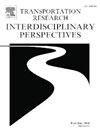解开相互作用:形成中小港口向能源中心转变的机制
IF 3.9
Q2 TRANSPORTATION
Transportation Research Interdisciplinary Perspectives
Pub Date : 2025-04-12
DOI:10.1016/j.trip.2025.101417
引用次数: 0
摘要
在持续的气候和能源危机中,港口被敦促发挥低碳能源中心(EHubs)的作用,中小型港口(SMPs)也不例外。虽然现有文献主要关注大型港口向EHubs的过渡,但本文通过突出两个工业挪威smp的持续过渡来填补空白。我将smp概念化为基础设施系统,即大型复杂的基础设施系统,并分析定性数据,即半结构化访谈和文档。研究结果表明,港口控制之外的因素影响着中小城市的转型:技术成分、物理基础设施和区域物质要素,其中它们之间的相互作用尤为重要。港口内的技术互动由两种机制驱动:一是功能耦合,指的是技术组件和物理基础设施之间的投入产出关系;二是结构耦合,强调物质元素的共同使用。从理论上讲,这种机制促进了我们对多个系统如何通过物质元素相互作用的理解。总之,这些机制导致了不同港口的类似技术之间的不同相互作用,表明由于容量有限,SMP过渡严重依赖于特定地点的物质偶然性。这些发现挑战了EHub转换的通用方法的概念,因为一个端口的有效解决方案可能在另一个端口失败。本文章由计算机程序翻译,如有差异,请以英文原文为准。
Unraveling interactions: Mechanisms shaping the transition of small and medium-sized ports to energy hubs
Amid the ongoing climate and energy crises, ports are being urged to embrace the role of low-carbon energy-hubs (EHubs), and small- and medium-sized ports (SMPs) are no exception. While the existing literature primarily focuses on the transition of large ports to EHubs, this paper fills the gap by spotlighting the ongoing transition of two industrial Norwegian SMPs. I conceptualized the SMPs as infrasystem, that is large complex infrastructure system, and I analyzed qualitative data, namely semi-structured interviews and documents.
The findings indicate that SMPs transition are shaped by factors beyond ports’ control: technical components, physical infrastructure, and regional material elements, with the Interactions among them being particularly important. Technical interactions within the ports are driven by two mechanisms: the functional coupling, which refers to input–output relations among technical components and physical infrastructures, and (2) the structural coupling, which highlights the conjoint use of material elements. This mechanisms, theoretically, advances our understanding on how multiple systems interact through material elements. Together, these mechanisms lead to varied interactions among similar technologies across different ports, demonstrating that SMP transitions depend heavily on place-specific material contingencies due to limited capacity. The findings challenge the notion of a universal approach to EHub transitions, as effective solutions in one port may fail in another.
求助全文
通过发布文献求助,成功后即可免费获取论文全文。
去求助
来源期刊

Transportation Research Interdisciplinary Perspectives
Engineering-Automotive Engineering
CiteScore
12.90
自引率
0.00%
发文量
185
审稿时长
22 weeks
 求助内容:
求助内容: 应助结果提醒方式:
应助结果提醒方式:


